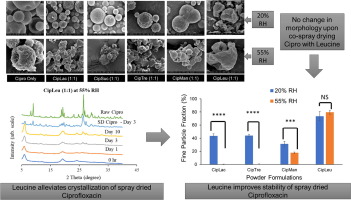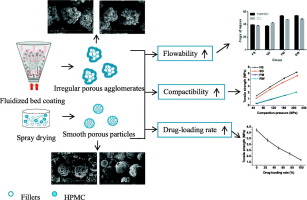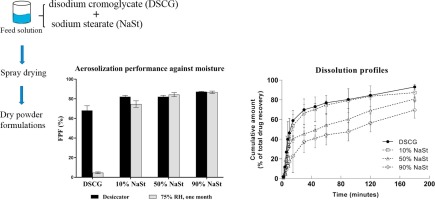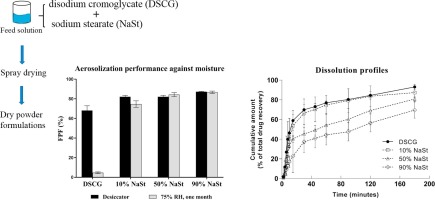- Home
- Blog
- News
- Basics
- Sources
- Agencies, Regulatory & Organisations
- CERSI Excipients Browser
- Excipient Report
- Excipient DMF List
- EXCiPACT Certified Companies
- Excipient Documentation
- Excipient EINECS Numbers
- Excipient E-Numbers
- FDA Inactive Ingredient List
- FDA GRAS Substances (SCOGS) Database
- IPEC Americas
- USP - U.S. Pharmacopeia
- Definitions
- Whitepapers / Publications
- Supplier
- Services
- Media
- Events
- 1st pharmaexcipients Poster Award
- Event Calendar
- Events featured by pharma-excipients
- 4th Annual Formulation & Drug Delivery Congress
- DDF Summit
- ExcipientFest Americas
- ExcipientFest Asia
- Global CompliancePanel
- International Conference and Exhibition on Pharmaceutics & Novel Drug Delivery Systems
- Formulation & Drug Delivery USA Congress
- Laboratory Medicine 2018
- Making Pharmaceuticals Europe
- Making Pharmaceuticals Exhibition
- Pharma Integrates
- PharmaExcipients China @CPhI China
- TTC Technology Training Center
- Jobs
- Online Sourcing
- Contact
26. September 2018
Usage of the amorphous phase of compounds has become the method of choice to overcome oral bioavailability problems related to poor solubility. Due to the unstable nature of glasses, it is clear that the method preparation of the amorphous glass will have an impact on physical/chemical stability and in turn in vivo performance. The method of preparation can also have a profound impact on the mechanical properties of the amorphous phase. We have explored the impact of preparation method on the...
08. August 2018
Combinatorial chemistry, computational molecular modeling and high throughput screening in drug discovery have significantly increased the number of poorly soluble drugs. About 40% of drugs developed in the past and about 90% of the drugs in development are poorly soluble drugs. When administered orally, a drug has to first dissolve in gastrointestinal fluids before it can be absorbed in to the blood and reach its site of action. The objective of this review article is to outline the key...
05. June 2018
Due to the high number of poorly soluble drugs in the development pipeline, novel processes for delivery of these challenging molecules are increasingly in demand. One such emerging method is KinetiSol, which utilizes high shear to produce amorphous solid dispersions. The process has been shown to be amenable to difficult to process active pharmaceutical ingredients with high melting points, poor organic solubility, or sensitivity to heat degradation. Additionally, the process enables classes...
23. April 2018
The aim of this study is to investigate the influence of excipients on physical and aerosolization stability of spray dried Ciprofloxacin dry powder inhaler formulations. The model drug, Ciprofloxacin hydrochloride, was co-spray dried with excipients such as disaccharides (sucrose, lactose, trehalose), mannitol and L-leucine. The spray dried samples were stored at two different relative humidity (RH) conditions of: (1) 20% and (2) 55% RH at 20°C. Ciprofloxacin co-spray dried with disaccharides...
11. April 2018
This study aimed to develop novel co-processed tablet fillers based on the principle of particle engineering for direct compaction and to compare the characteristics of co-processed products obtained by fluid-bed coating and co-spray drying, respectively. Water-soluble mannitol and water-insoluble calcium carbonate were selected as representative fillers for this study. Hydroxypropyl methylcellulose (HPMC), serving as a surface property modifier, was distributed on the surface of primary filler...
05. April 2018
The dehydration of biopharmaceutical products through drying provides numerous benefits, including ease of handling and storage, reduction in transportation costs, and improved stability. Typically, the drying of biotherapeutics is accomplished through freeze-drying, however, the removal of water by lyophilization possesses several drawbacks, including lengthy drying times, low energy efficiency, and the high cost of purchasing and maintaining the equipment. Furthermore, freeze- drying is a...
01. April 2018
Amorphous powders are thermodynamically unstable, significantly impacting the processing, storage and performance of a product. Therefore, stabilization of the amorphous contents is in demand.
06. March 2018
Amorphous powders are thermodynamically unstable, significantly impacting the processing, storage and performance of a product. Therefore, stabilization of the amorphous contents is in demand. In this study, disodium cromoglycate (DSCG) powder was chosen as a model drug because it is amorphous and highly hygroscopic after spray drying.
01. February 2018
Inhalation therapy is popular to treat lower respiratory tract infections. Azithromycin is effective against some bacteria that cause respiratory tract infections; but it has poor water solubility that may limit its efficacy when administrated as inhalation therapy. In this study, dry powder inhaler formulations were developed by co-spray drying azithromycin with L-leucine with a purpose to improve dissolution.
18. December 2017
Spray drying is a well-established scale-up technique for the production of cocrystals. However, to the best of our knowledge, the effect of introducing a third component into the feed solution during the spray drying process has never been investigated.










